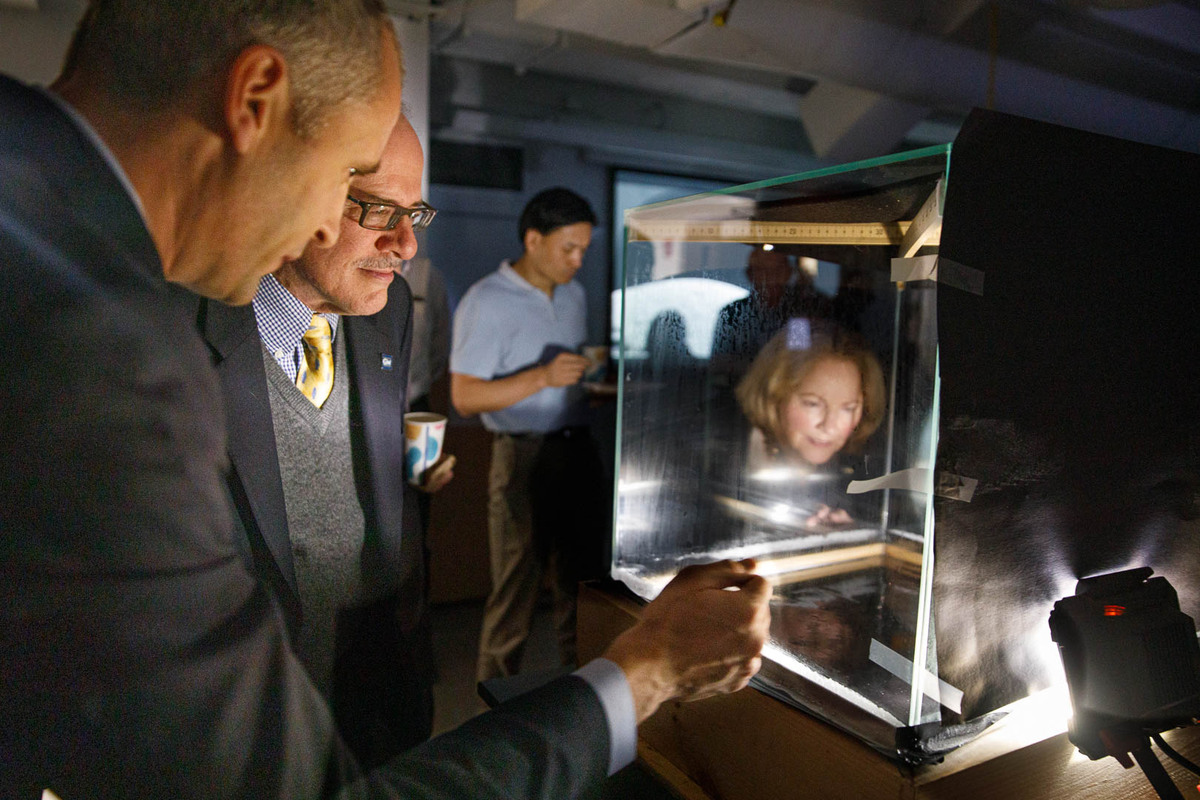By Ruth Steinhardt
The George Washington University launched its Physics Department-led Innovation Lab initiative last Monday, opening a new laboratory space in Corcoran Hall to faculty, students and staff across the university. The goal of the Innovation Lab is to enable interdisciplinary collaboration in a professional research environment.
Assistant Professor of Physics and astrophysicist at NASA Goddard Space Flight Center Sylvain Guiriec, who spearheads the initiative, said the lab will be a space in which to apply physics solutions to real-world problems by bringing together creativity and expertise from every academic specialty.
“Major discoveries come from the mix of fields—not only scientists but all fields,” Dr. Guiriec said. He cited as an example GPS navigation, which required multiple scientific insights to develop and which has been applied to solve social problems thanks to the efforts of linguists, artists, policymakers and others. “All together, we can achieve great ideas for the future.”
University President Thomas J. LeBlanc, his wife Anne LeBlanc and members of the GW Office of Innovation and Entrepreneurship toured the space with physics students and faculty, who presented some of the projects it now hosts. One team is working on developing low-cost, portable muon telescopes for use in underprivileged academic communities and developing countries. Another team, comprising only undergraduate students, developed a virtual reality classroom tool that takes participants to space.
“If this is just the start of the ingenuity and interdisciplinary collaboration we will see coming out of the Innovation Lab, then we have a really exciting future in front of us,” Dr. LeBlanc said.
The lab space in the basement of Corcoran Hall is open to all members of the university, including those without a scientific or technical background. It now hosts evening clubs from about 6 to 8 p.m. Tuesdays and Thursdays where participants at all levels of technical knowledge can share ideas and work together on electronics and programming projects.
Dr. Guiriec said the Innovation Lab initiative also served as a pilot for teaching simple electronics, introductory programming and basic data analysis to non-STEM majors. This pilot program was applied to the University Honors Program course on the physics of everyday life, in which students worked on a semester-long project involving the ways physics manifest in the mundane.
“In only one semester, the students started to work in autonomy with these new technologies,” Dr. Guiriec said. “This effort will be pursued for teaching physics and new technologies to non-STEM majors, but also to refresh labs for introductory physics classes and implement new advanced labs for physics majors starting in fall 2020.”
Dr. Guiriec said the space also will provide career opportunities for physics students by hosting the development of real-scale research experiments with partners including the NASA Goddard Space Flight Center, the Jefferson Lab and the Naval Research Laboratory.


